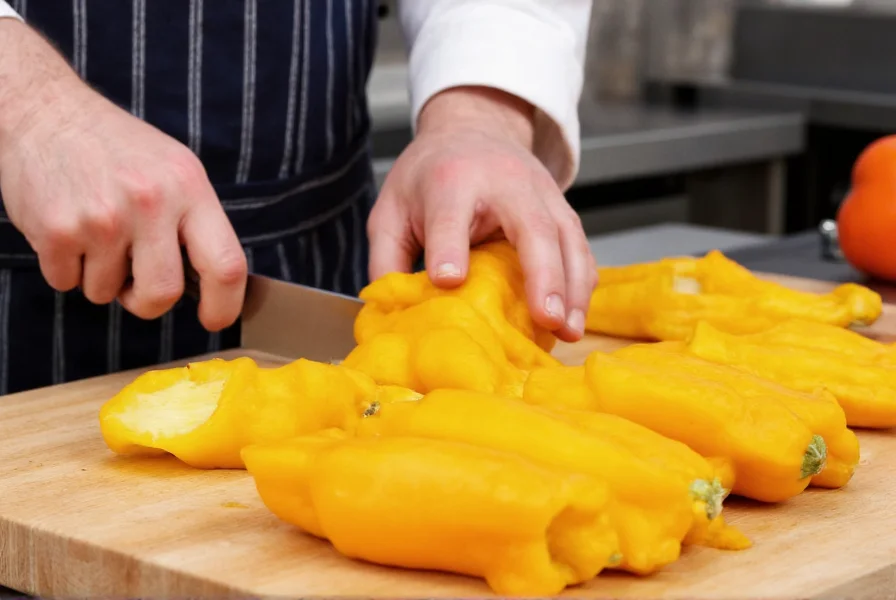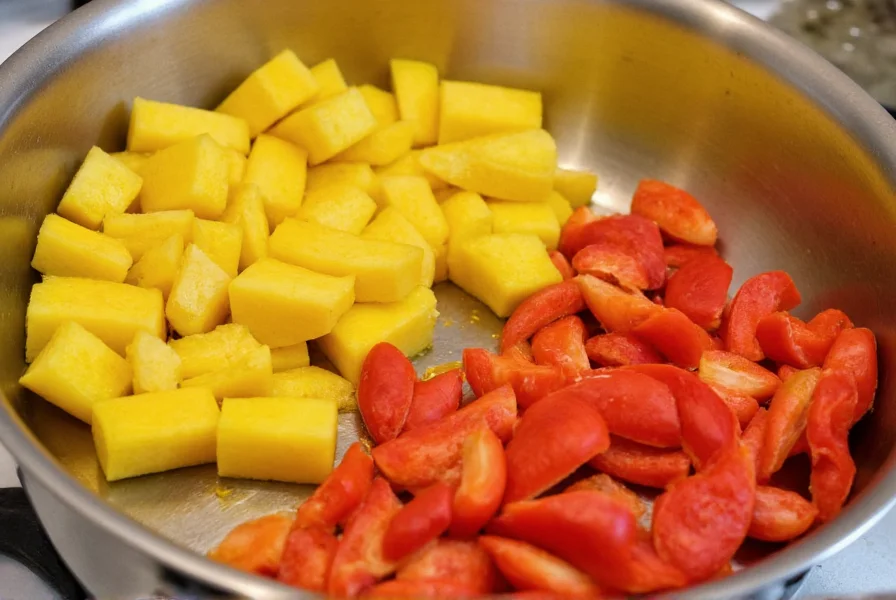| Cooking Method | Temperature | Time | Texture Result |
|---|---|---|---|
| Roasting | 400°F (200°C) | 25-30 minutes | Tender with caramelized edges |
| Sautéing | Medium-high heat | 8-10 minutes | Slightly crisp exterior, tender interior |
| Grilling | Medium heat | 12-15 minutes | Charred marks, soft flesh |
| Steaming | High heat | 10-12 minutes | Delicate, moist texture |
Understanding Pepper Squash
Pepper squash, sometimes called" sweet pepper squash" or" pepper-shaped squash," is a versatile summer squash variety known for its distinctive tapered shape and sweet, mild flavor. Unlike winter squashes, pepper squash has thin, edible skin and a high water content, making it perfect for quick cooking methods. This nutrient-dense vegetable provides significant amounts of vitamin C, vitamin A, potassium, and dietary fiber while remaining low in calories—approximately 20 calories per cup when cooked.

Selection and Preparation
When selecting pepper squash for cooking, look for specimens that feel heavy for their size with smooth, unblemished skin. The best pepper squash measures 6-8 inches in length and yields slightly when gently pressed. Avoid oversized squash, which often contain developed seeds and have a less tender texture.
Proper preparation begins with thorough washing under cool running water. Unlike some winter squashes, pepper squash skin is completely edible, though you may choose to peel it for certain recipes. To cut safely, trim both ends, then slice lengthwise through the narrow neck. For stuffing recipes, leave the base intact while hollowing out the center with a small spoon.
Optimal Cooking Techniques
The best way to cook pepper squash depends on your desired outcome. For rich flavor development, roasting remains the superior method. Toss cubed squash with 1 tablespoon olive oil, salt, and pepper, then spread in a single layer on a parchment-lined baking sheet. Roast at 400°F until golden brown at the edges—typically 25-30 minutes, flipping once halfway through.
For quick weeknight meals, sautéing delivers excellent results. Heat 1-2 tablespoons of olive oil or butter in a skillet over medium-high heat. Add sliced pepper squash in a single layer (avoid overcrowding) and cook 4-5 minutes per side until tender-crisp with attractive sear marks. This method preserves more of the vegetable's natural crunch while developing complex flavors through the Maillard reaction.
Flavor Pairing Strategies
Pepper squash's mild sweetness pairs beautifully with both bold and delicate flavors. For Mediterranean-inspired dishes, combine with garlic, lemon zest, fresh herbs like oregano or thyme, and crumbled feta cheese. Asian variations shine with ginger, soy sauce, sesame oil, and a touch of honey. The vegetable also complements roasted red peppers, cherry tomatoes, and caramelized onions.
When considering what to serve with pepper squash, think about balancing textures and flavors. It works wonderfully as a side to grilled chicken or fish, incorporated into grain bowls with quinoa or farro, or tossed with pasta and a light tomato sauce. For vegetarian mains, try stuffing hollowed pepper squash halves with a mixture of cooked grains, nuts, dried fruits, and herbs.

Common Cooking Mistakes to Avoid
Many home cooks make critical errors when preparing pepper squash that compromise texture and flavor. Overcrowding the pan during sautéing causes steaming rather than browning—always cook in batches if necessary. Using insufficient heat prevents proper caramelization, while excessive heat burns the exterior before the interior cooks through.
Another frequent mistake involves improper seasoning timing. Adding salt too early draws out moisture, preventing proper browning. Wait until the squash has developed some color before seasoning. Additionally, many cooks discard the nutrient-rich seeds and pulp; these can be roasted separately for a crunchy garnish or blended into soups for added texture.
Storage and Leftover Tips
Raw pepper squash maintains quality for 3-4 days when stored unwashed in the refrigerator's crisper drawer inside a perforated plastic bag. Cooked pepper squash keeps for 3-4 days in an airtight container. When reheating, avoid the microwave which can make the squash mushy; instead, warm in a skillet over medium-low heat with a splash of water or broth to restore moisture.
Simple Pepper Squash Recipe Variations
For a basic roasted pepper squash side dish, toss 2 pounds cubed squash with 2 tablespoons olive oil, 3 minced garlic cloves, 1 teaspoon dried thyme, salt, and pepper. Roast at 400°F for 25 minutes until tender. Finish with a squeeze of fresh lemon juice and chopped parsley.
For a heartier meal, try pepper squash and chickpea curry: Sauté 1 diced onion and 2 minced garlic cloves until soft. Add 1 tablespoon curry powder, 1 can coconut milk, 1 can drained chickpeas, and 2 cups cubed pepper squash. Simmer 15-20 minutes until squash is tender. Stir in fresh cilantro before serving over rice.
How do you know when pepper squash is cooked properly?
Pepper squash is perfectly cooked when a fork inserts with slight resistance—tender but not mushy. For roasting, look for golden brown edges and slightly shrunken appearance. When sautéing, the squash should have attractive sear marks while maintaining its shape. Overcooked pepper squash becomes watery and loses its structural integrity.
Can you eat the skin of pepper squash?
Yes, the skin of pepper squash is completely edible and contains valuable nutrients and fiber. Unlike winter squashes with tough rinds, pepper squash has thin, tender skin that softens during cooking. Many chefs recommend leaving the skin on for roasting or grilling to help maintain the vegetable's shape and add visual appeal. Peel only if making purees or if serving to young children.
What's the difference between pepper squash and other summer squashes?
Pepper squash differs from zucchini and yellow squash in its distinctive tapered shape resembling a bell pepper, hence the name. It typically has a sweeter flavor profile and slightly denser texture than zucchini, with a more pronounced neck section. While all summer squashes share similar nutritional profiles and cooking methods, pepper squash holds its shape better during cooking, making it ideal for stuffing and grilling applications where presentation matters.
How can I prevent pepper squash from becoming watery when cooking?
To prevent watery pepper squash, avoid salting too early in the cooking process as this draws out moisture. When roasting, ensure pieces are spread in a single layer with space between them to allow evaporation. For sautéing, use high enough heat to promote browning rather than steaming. If cooking produces excess liquid, simply drain it off or continue cooking until evaporated. Salting raw squash and letting it sit for 10 minutes before patting dry can also help reduce moisture content.











 浙公网安备
33010002000092号
浙公网安备
33010002000092号 浙B2-20120091-4
浙B2-20120091-4